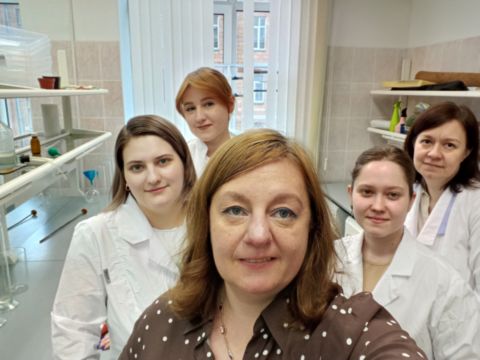Ecologists of the SUSU Institute of Natural Sciences and Mathematics Tatiana Krupnova, Olga Rakova and 3rd-year student Valeriia Simakhina, have presented a new method for determining the sources of urban soil pollution with rare-earth elements.
The result was published in the Chemosphere prestigious international journal, included in the first quartile of Scopus.
Rare-earth elements are those that are highlighted in a separate line at the bottom of the periodic table. Such substances are not necessarily radioactive. But they do not bring anything good to the human body either.
The “rare-earth” itself means that they are rarely found in natural conditions. Accordingly, their presence in urban dust is most likely an anthropogenic factor.
Almost the entire list of rare-earth elements from the periodic table was found in soil samples in Chelyabinsk, though within acceptable limits. In descending order of concentration these are: cesium, lanthanum, neodymium, presiodymium, samarium, gadolinium, dysprosium, erbium, ytterbium, europium, terbium, holmium, thulium and lutetium.
“We studied the potential sources and risks to human health associated with rare-earth elements contained in the topsoil of the industrial Russian city of Chelyabinsk,” said Associate Professor Tatiana Krupnova. “Their natural sources were also taken into account since the city is located on the border of granites and sedimentary rocks: the Urals and Western Siberia. The concentrations and distribution of rare-earth elements in soils of four types of areas, such as courtyards of residential buildings, city parks, roadsides and industrial sites, were analyzed. Average concentrations in soils collected from yards were the highest ones. The presence of rare-earth elements in the yard soil can be affected by poor cleaning; and a process similar to “siltation” of the territory occurs.”
However, the city of Chelyabinsk is also filled with industrial enterprises, which obviously also contribute to soil pollution.
The scientists proposed a method according to which dust from suspected industrial sources is analysed simultaneously with soils. In the samples, fractions of heavy and light rare-earth metals are isolated (the further in the periodic table, the heavier) - and compared with their reference content in the slate mountains of Europe.
“We have shown that in Chelyabinsk the largest amount of rare-earth elements is discharged at the electrometallurgical plant and zinc production plant,” Olga Rakova commented on the results. “Fortunately, the estimated daily intake of such substances into soils was found to be below safety thresholds for children and adults. However, the problem still remains. What should we do to reduce pollution? Apply phytoremediation technologies, conduct smart landscaping of industrial and residential areas, and more thorough cleaning of fallen leaves and road dust. It is also recommended to move the most dangerous production processes outside the urban area.”
The research studies by the SUSU ecologists was supported by a grant from the Russian Science Foundation within the framework of the Science and Universities national project.




